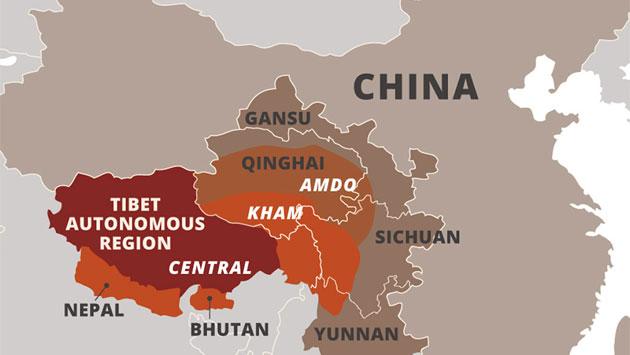Reply To:
Name - Reply Comment
 China’s Tibet policy has been one of the most controversial aspects of the Chinese Communist Party’s (CCP) seventy-five-year rule. While the CCP has claimed to develop Tibet as a global center, the reality is much grimmer than Beijing projects.
China’s Tibet policy has been one of the most controversial aspects of the Chinese Communist Party’s (CCP) seventy-five-year rule. While the CCP has claimed to develop Tibet as a global center, the reality is much grimmer than Beijing projects.
Tibet, rich in cultural heritage and historical significance, remains one of the most underdeveloped regions in China. Despite its vast natural resources and strategic importance, Tibet lags behind in nearly all development metrics, including literacy rates, healthcare access, and infrastructure. This raises the question: Why does the CCP, which has promoted rapid development elsewhere in China, allow such disparities in Tibet?
The answer is straightforward: Tibet is punished for its adherence to a faith the CCP views as revolutionary and anti-CCP. The Party aims not only to eradicate Tibetan Buddhism but also to transform the region into a Han-majority area, ultimately erasing Tibetan culture.
China's policies in Tibet have focused on limiting foreign contact and stifling economic development. The state has also sought to alter the local demography, disrupting the ethnic and cultural balance to assert its dominance. China's Tibetan policy is notoriously brutal, as evidenced by its violation of the Seventeen Point Agreement, the dismantling of Tibetan traditions, and the forced exile of the Dalai Lama.
Under-development as a Strategy of stifling the culture of Tibet
The literacy rate in Tibet is among the lowest in China, contrasting sharply with the rapid educational advancements in other regions. Tibetan schools are often underfunded, and the curriculum prioritizes Mandarin over the Tibetan language, reinforcing cultural erosion. This suppression of education is not an oversight but a calculated strategy by the CCP to control the Tibetan population by keeping them undereducated and less informed about their rights and the outside world.
Furthermore, the CCP’s policies in Tibet suppress not only economic development but also the social and cultural identity of the Tibetan people. By limiting development, the CCP ensures that Tibet remains economically dependent on Beijing, curbing any potential for resistance. A well-developed, educated population with strong cultural ties threatens the CCP’s narrative of a unified China under its rule. Thus, by maintaining low development parameters, the CCP can more easily impose its will on the Tibetan people, minimizing dissent and preserving its control over the region.
This systematic suppression of development is a deliberate attempt to weaken Tibet’s ability to assert its identity and autonomy. The world must recognize this as part of the broader strategy of the CCP, which uses underdevelopment as a tool of oppression. It is crucial to bring international attention to this issue and advocate for the Tibetan people’s rights to education, economic opportunities, and the preservation of their unique cultural heritage.
For decades, the Tibetan population has been subjected to severe and violent Chinese policies designed to instill fear and suppress resistance. Discriminatory practices prevent the use of local culture and language, with communities banned from mentioning the Dalai Lama’s name or writings. The authorities' fear of the Dalai Lama’s influence is so intense that they worry his teachings could spark a mass revolt among Tibetans. To prevent this, the state suppresses both communities and news outlets.
Over the past thirty years, hundreds of young Tibetans have self-immolated to draw attention to the oppressive nature of the Chinese regime. This has led the CCP to extend its policies beyond overt repression; the party now directs local governments to report all political activities, monitor personal communications, and profile the DNA of individuals deemed suspicious, all without accountability. These strategies raise serious questions about human rights violations undertaken by the CCP in Tibet.
The failing logic of the CCP’s official response to Tibet
The justification for such cruel measures often comes in the form of claims about stability, economic development, and overall progress in a volatile region. The Party’s repeated human rights violations have not only attracted global scrutiny but have also hindered Chinese plans in Tibet.
The CCP’s sole objective in Tibet is to reshape Tibetan history. The Party describes these tactics as part of its “strategy to achieve long-term social stability.” While the official narrative is cloaked in the motive of achieving lasting peace, it is clear that Tibet is part of a larger CCP plan to dominate disputed regions.
The well-being of millions of Tibetans rests on disrupting Chinese strategies. The world should be concerned about Chinese intentions in disputed regions, as the Party will not stop at Tibet if it successfully achieves its strategic objectives there.